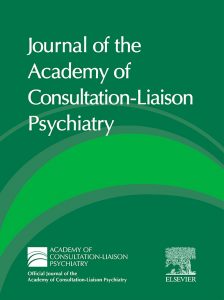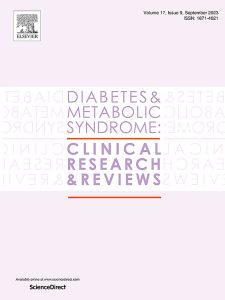Authors: Yelizaveta Sher, MD, FACLP, et al.
Abstract: C-L psychiatrists frequently address dyspnea in intensive care unit (ICU) patients. Dyspnea is common in this patient population, but is frequently misunderstood and underappreciated in non-communicative ICU patients, say the authors.
This paper provides an updated review on dyspnea specifically in the ICU population, including its pathophysiology and pharmacological and non-pharmacological management, aimed at C-L psychiatrists consulting in ICU. A reference guide has been created to help C-L psychiatrists and intensivists in the screening and treatment of dyspnea and Dyspnea-Associated Anxiety (DAA) in critically ill patients.
Dyspnea is frequently associated with anxiety, prolonged days on mechanical ventilation, and worse quality of life after discharge, say the authors. It can also increase the risk of posttraumatic stress disorder post ICU discharge. However, dyspnea is not routinely screened for, identified, or addressed in the ICU.
“C-L psychiatrists have been increasingly asked to manage delirium, anxiety, and agitation experienced by patients in the ICU,” say the authors. “What C-L psychiatrists inadvertently but frequently address in these consults is dyspneas as well as DAA. Dyspnea causes a lot of distress for patients, heightens anxiety, complicates medical management, and leads to post-ICU psychological consequences, such as PTSD. However, it is rarely screened for in clinical practice or studied.”
A recent study of lung transplant recipients found that clinician evaluation reported 63% of patients had dyspnea during their admission to the ICU after lung transplant surgery. “Dyspnea can increase duration of mechanical ventilation, worsen rehabilitation efforts, and prolong ICU stays. There is established data in the outpatient setting demonstrating dyspnea as a predictor of hospitalization and mortality in patients with chronic lung disease.
“Dyspnea is frequently confused with psychological anxiety preventing patients’ cooperation in weaning from ventilation. Hence, dyspnea should be a symptom that is recognized and actively managed by ICU physicians and C-L psychiatrists. Several excellent reviews over the last decade have discussed dyspnea and its proposed management.”
Importance: Dyspnea is common, distressing, and detrimental in ICU patients. Unfortunately, it is not screened for and is often misunderstood and underappreciated. C-L psychiatrists are frequently asked to manage anxiety in the ICU, but a frequent precipitant of this anxiety is dyspnea. Hence, while ICU clinicians treat underlying pathology and respiratory therapists manage ventilatory settings to address dyspnea, C-L psychiatrists can further educate their colleagues on the interplay between dyspnea and DAA.
Availability: To be published by the Journal of the Academy of Consultation-Liaison Psychiatry (JACLP).





